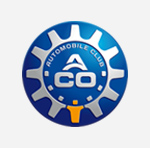The major 2016 technical innovation is the introduction of the new OK regulations. Unlike the previous technological leap, which marked the end of the era of the 100 cc karts with direct drive, there hasn’t been a transition period for the new technical rules. The KF2 engines (2-stroke 125 cc without gearboxes) appeared in endurance in 2008 and quit the scene at the end of 2015 after seven victories in the 24 Heures Karting – Le Mans. The OK engines recently homologated by the CIK/FIA were quickly adopted by teams racing in long-distance events.
The initials OK mean Original Karting. While they use the same technical bases as the KF engines, the new regulations allow clutches, starters, batteries and complex electrical harnesses to bring kart racing closer to its origins. Thus an OK kart is push-started with the help of a decompression valve on the cylinder head so the rear of the chassis doesn’t have to be lifted. There are no front brakes because of the same search for simplicity and there is a real weight gain. The endurance version’s weight falls from 162 to 155 kg. With an output of around 39 bhp the power is slightly greater than that of the old KFs so better performances can be expected, and maybe new lap and distance records in the Sarthe event (2 119 km in 2013).
While the OKs are favourite for outright victory it is worth coming just to see the battle between the drivers in Group 2. This category includes the makes cup karts like the Rotax Max Evo, Iame X30 and Vortex Rok DVS. They weigh around 8 kilos more and have some 9 bhp less than the OKs, but can use hand-operated front brakes. The Rotax Max engines, which dominates in this category, has already scored podium finishes at Le Mans on several occasions and could cause an upset thanks to their tried and tested reliability.
LeCont, long-time endurance partner, has been retained as the exclusive tyre manufacturer for all those taking part in the 24 Heures Karting.
The other big announcement for the 2016 season is the awarding for the first time in the history of kart racing of an official CIK/FIA Endurance Champion title. The winner in Group 1 (OK engines), the blue-riband endurance racing category, will be crowned at Le Mans after the 31st 24 Heures Karting.
In the event’s programme don’t forget the traditional 24 Minutes Minikart for budding champions between 7 and 10 years old, and the Kart Legend for karts built from the end of the 1950s to the middle of the 80s.
Entrance to the 2016 24 Heures Karting is free for everybody. In addition to the great on-track spectacle, the public will also be able to enjoy activities/entertainment on site as well as rented karts and simulators
